I’m locked within an old vodka distillery infested by otherworldly Zen flora choking the air with poisonous spores. After a brief, humorous description of how vodka was both terrible and amazing from my cohort and guide Russell the radio cuts out, leaving me in silence. In the distance I hear a low, threatening growl and I begin to feel claustrophobic as the walls close in around me.
I inch my way forward, leaning around every corner as I try to avoid whatever is making that ungodly sound. Eventually I stumble on a man and rescue him from a barnacle, and before he disappears he warns me of “Jeff” in an all too pleasant manner. Such a benign name, I think, so I let my guard down. That is, until I looked down.
The best VR experiences lead you to forget you’re essentially strapped into a simulation with a fancy tech-box strapped to you face, wrapped in the warm embrace of some strange new world. But there is always something that undermines that sense of presence, that reminds you that – hey – this isn’t real.
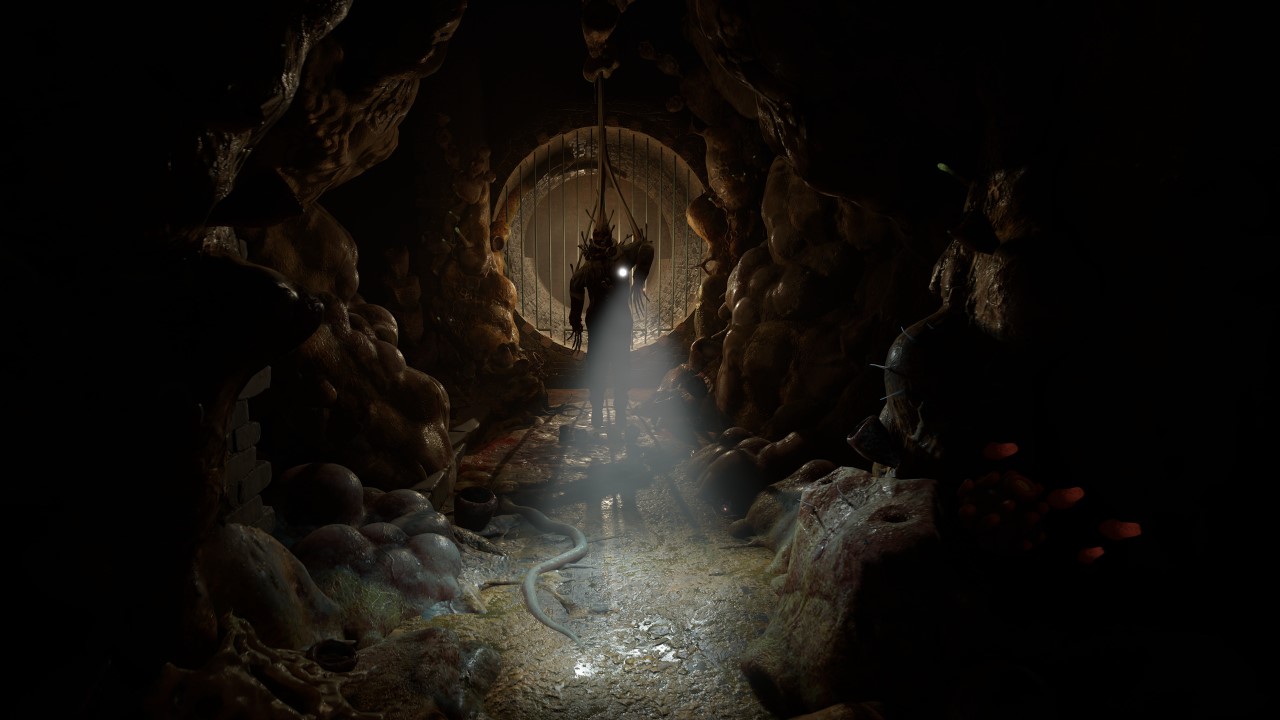
That was not the case when I met “Jeff” in Half-Life: Alyx. Almost the opposite, in fact: my single-minded drive to survive and evade the alien creature was so overwhelming I forgot I could end it all by taking off the headset. Such is the magic of VR in Valve’s deliberate hands, and seldom was the spell broken.
Half-Life: Alyx is the first proper Valve developed Half-Life game since 2007’s Half-Life 2: Episode 2, and their first foray in creating a fully featured triple-A VR game. I’ll admit I was somewhat cynical after the announcement back in November. The wide window between releases paired with a platform still finding its legs didn’t inspire the most confidence. I’m a Half-Life die-hard (writing this review with my replica Zero Point Energy Field Manipulator resting lovingly on display behind me), so I’ve been craving a new title as much as the next person. I watched the clamor for Episode 3 – then eventually Half-Life 3 – shift from frustration, to resignation, to meme over the last decade. It’s understandable I remained somewhat skeptical after Half-Life: Alyx was revealed.
A VR-only prequel set between Half-Life 1 and Half-Life 2? Sure, after such an extensive drought I’d take it, but myself and others were still eager to pick up where Episode 2’s cliffhanger ending left off. Alyx didn’t seem like a bad idea on paper, and despite my wary demeanor it was hard to keep my hype in check after the lack of even table-scraps these last thirteen years, but I felt I had to keep my expectations in check. This would be a fun VR diversion that provided some additional lore, that’s it.
Oh, how disgustingly wrong I was.
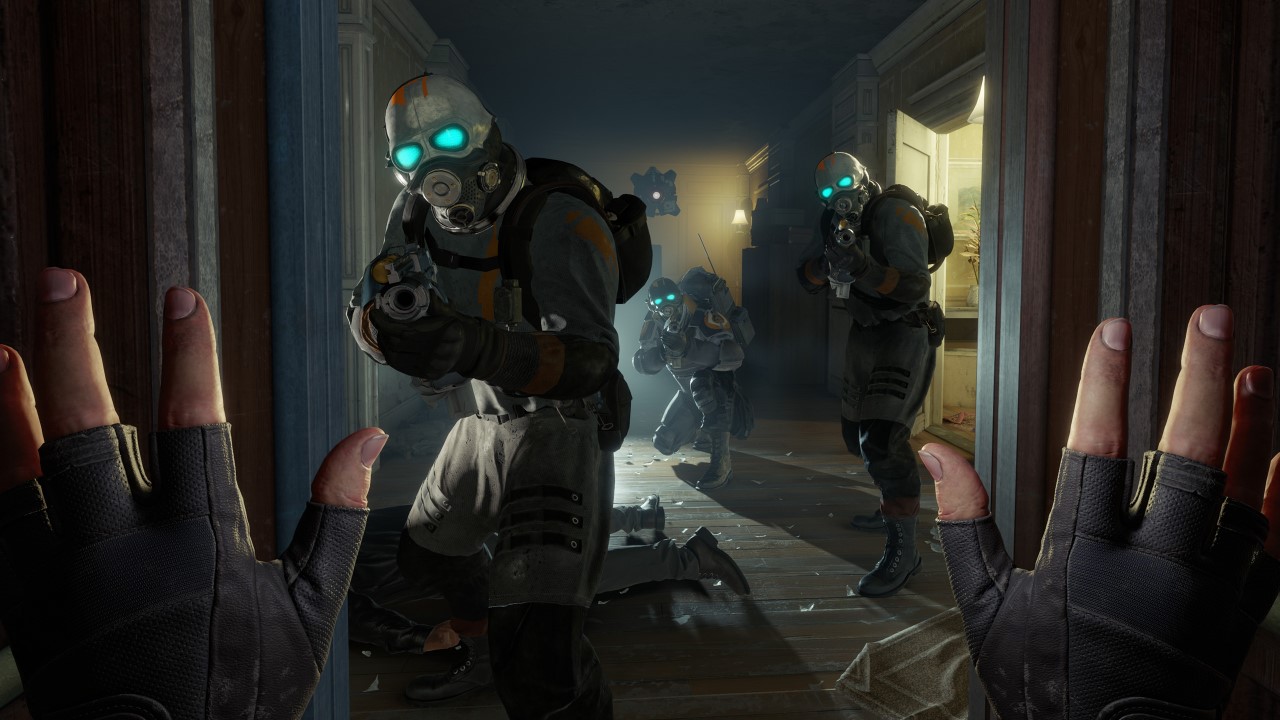
Half-Life Alyx is VR’s Killer App
I’ve been one of the VR faithful for a while now, having a first-wave HTC Vive and now an Oculus Rift S setup in my house. Hell, for Christmas a couple years back I convinced my friends to pitch-in and gift my buddy a PSVR, because I knew he’d love it as a racing-game aficionado. I firmly believed VR could rise above being a gimmick with the right genre and design, but quality full-length titles have slowly trickled out.
The back half of 2019 saw some substantial progress with Asgard’s Wrath, Stormlands, Walking Dead: Saints and Sinners, and Boneworks all exhibiting VR’s strengths and proving the tech wasn’t relegated to tech demos alone. But, they still weren’t quite there. Interactions in Asgard’s Wrath were still cumbersome, Stormlands and Walking Dead’s core loops became overly repetitive quickly, and Boneworks slavish commitment to physics often pulled me out of the illusion. The games were nailing down and setting standards for future VR titles, but we were still some ways away from a game that could rival anything found outside a headset.
So I thought.
After Half-Life: Alyx virtual reality will never be the same. Valve’s return to Half-Life is not only one of the the best Half-Life games ever made, but the bar in which all future VR titles must clear. Valve didn’t merely craft a solid experience that works well in VR – they’ve leveraged their unique talent as world-builders to such an extreme degree that I rarely found myself remembering I was in fact not in City 17.
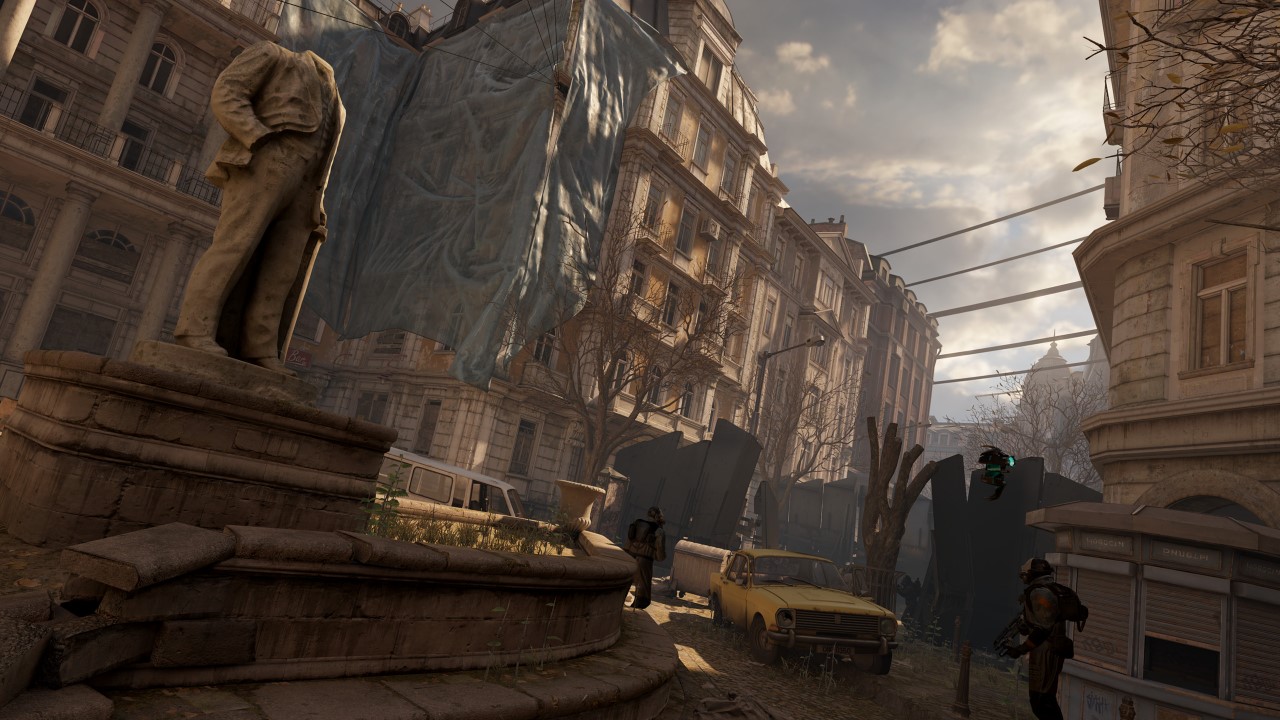
VR games don’t tend to push for the most intense graphical experience: they’re rendering a world via two screens at a high-resolution and frame-rate. They need to practice restraint if they plan to look pretty without causing jarring motion sickness. With that being said, Valve must be practicing some eldritch form of witchcraft, because Half-Life: Alyx is stunning. Sure, if I wanted to be reductive I could point out where shadow mapping, texture pop-in, and lighting pales in comparison to more traditional games, but when immersed in a virtual world fidelity isn’t king – presence is.
If all you care about are graphics then I’ll say this: Half-Life: Alyx is a beautifully rendered game with competitive visuals. It’s easily the best looking VR game full-stop. The textures are crisp, the lighting appropriately moody, and the slightly stylized aesthetic ensures everything feels real without cratering performance.
It all gels together to make City 17 feel alive with true scale as the Citadel towers over me in the distance, and a strider plows ahead through the streets. Seeing the biomechanical walking tank in VR instilled in me a greater sense of respect for these powerful monstrosities, now a more immediate and pressing threat when given a proper presence in VR. No longer was the strider some annoying enemy that appeared large in the distance – it was now truly gigantic as it loomed overhead, and seeing the barrel of its cannon swing towards me made it a more tangible, frightening threat.
All of Half-Life: Alyx is lovingly animated, which is something we take for granted in regular games. In VR, when the world has proper depth and texture, stilted movements can break the experience and remind you that you are indeed playing a video game. Valve is keenly aware of this, and everything from a headcrap trying to latch on and devour my skull candy to Combine troopers leaning out of cover to splatter it against the walls looks and feels realistic. Objects and Alyx alike have a proper weight and heft that guarantee the spell VR casts remains unbroken, unlike other VR titles I have played where “realism” often meant, “jagged and obtuse.”
See, animation and graphics are only half the battle, yet we often forget how important the physics simulation is towards maintaining immersion. Pushing open a door, or knocking debris off a shelf should feel intuitive, and be near enough to what our brain expects that action to feel like if we wish to remain engrossed. In some games the momentum is all wrong, and others the weight feels off. It’s why melee is often difficult to get right: swinging a bastard sword around as if it were made of foam may make it easier to use in VR, but it feels off.
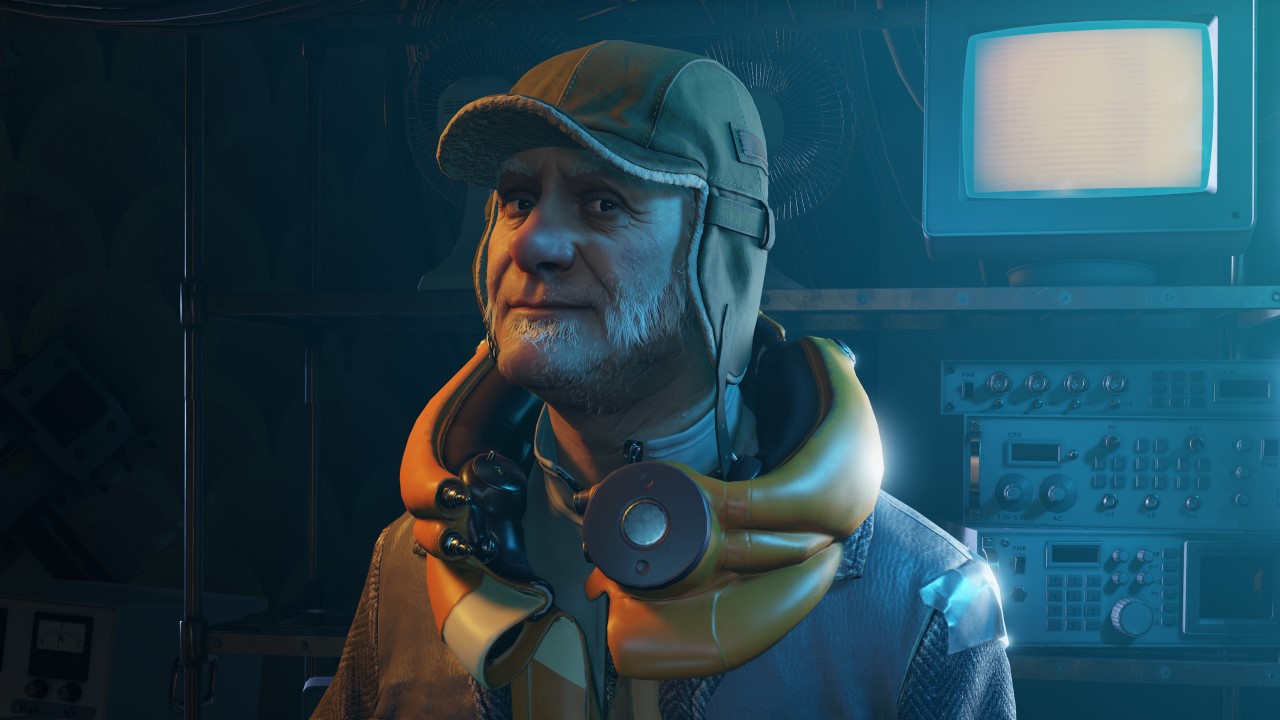
Valve has always excelled at using physics within their games – look no further than Half-Life 2, a game that used physics in such a novel yet believable way that games a decade on are still unable to match it. It’s Valve’s ace in the hole, an innate strength that – in hindsight – makes Half-Life a bit of a VR no-brainer. It’s almost like Half-Life was made for VR long before commercial headsets were a feasible dream, and Half-Life: Alyx uses the template established by its predecessors to fantastic effect.
Everything feels right in Half-Life: Alyx, from the weight of my pistol, to the way objects scatter as I rummage through drawers for ammo and resin. The physic puzzles don’t ever quite reach the complexity we saw on display in Half-Life 2, but the engine that powers it all is woven into every interaction you have. Tossing grenades and bottles (hi “Jeff”) wasn’t a struggle, and often times I’d toss items precisely where I wanted them. I was able to grab a bucket to catch a headcrab before it could plop on my head, and overturned it to contain the little bastard. The stalwart physics engine, when married to the clean visuals and smooth animations that provide City 17 a sense of genuine actuality, granted the game a sense of presence unlike any other VR title I played.
This is all further bolstered by stellar sound design, and even with a pair of earbuds with virtual surround sound I was able to pinpoint where zombies and other threats lurked. The audio mixing is solid throughout Half-Life: Alyx, which provided an extra layer of deep set immersion while playing. When you feel like you are within a different world having sound occlude and appear in the wrong places is utterly jarring, so it’s a welcome relief Valve nailed the audio. Even when the synth heavy music ramps up after long moments of wandering silence it feels appropriate, and adds an additional point of tension during key moments.
Valve extended this commitment to immersion even towards the controls. Often I’ve found the illusion shattered in other games because they tried too damn hard to make the way I interacted with their worlds too real. Using the Touch Controllers for the Oculus Rift S can sometimes mean squeezing and pressing multiple buttons all at once to perform a simple action, but in Half-Life: Alyx Valve realized less is more. The gravity gloves (AKA, “Russells”) are a good example of this. All I had to do was aim at an item I wanted, and using either the trigger or grip button I could then flick my wrist and summon the object towards me. One last press of either button and I grabbed it.
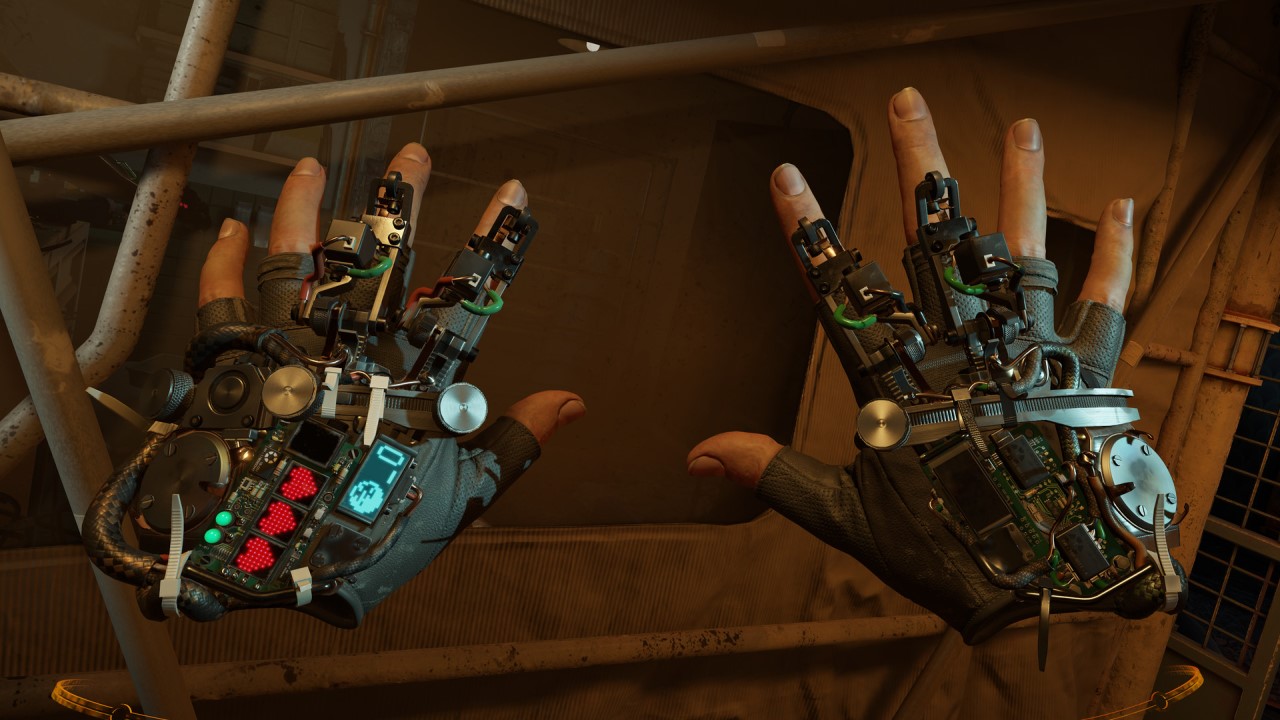
I actually over-thought this interaction initially, as I squeezed both buttons to grab on to things only to find a single button sufficed. Even holding my weapon didn’t require I grip the controller, which was something I had been conditioned to expect. This may sound trivial, but in VR muscle-memory is an important component. The more complicated an action the longer it takes to develop and in turn forget you are holding two chunky pieces of plastic.
So many VR games neglect this, yet within Half-Life: Alyx I found myself clicking into rhythm within an hour. That’s not to say the controls are too simple: you still have the VR staples of having to grab ammo from some portion of your body, loading it physically into your weapon, then chambering a round. All of this felt natural within minutes instead of hours upon hours of play, because Valve didn’t over-design the mechanic. Grab, slap, pull – done and done.
This goes for every interaction in the game, all of which are simple to execute yet keep you firmly planted in this virtual rendition of City 17, which itself is absolutely lousy with world-building details. Propaganda and pre-war posters hang from the walls of dilapidated buildings that are being consumed by the ongoing encroachment of Zen within the Quarantine Zone. Abandoned apartments still have traces of the previous tenets scattered about, and the eerie tunnels and sewers in the early game feel forbidden and foreboding. It’s clear while playing Half-Life: Alyx how astutely aware Valve was of the importance of world-design in maintaining the virtual illusion, and they certainly leveraged their top-tier talents in this regard.
Everything from a design perspective clicks into place expertly within Half-Life: Alyx. Every system, every detail, every way in which you interact with the world has been minutely analyzed to ensure players are never taken out of the experience. With Half-Life: Alyx Valve has shown that other developers have been over-thinking how we should play VR games, and they’ve doubled down on a tightly focused experience that embraces the complexity permitted by virtual reality without making it overwhelming. In this regard, no other VR title plays as well and remains as immersive as Half-Life: Alyx, and it has established the norm all future titles will inevitably embrace.
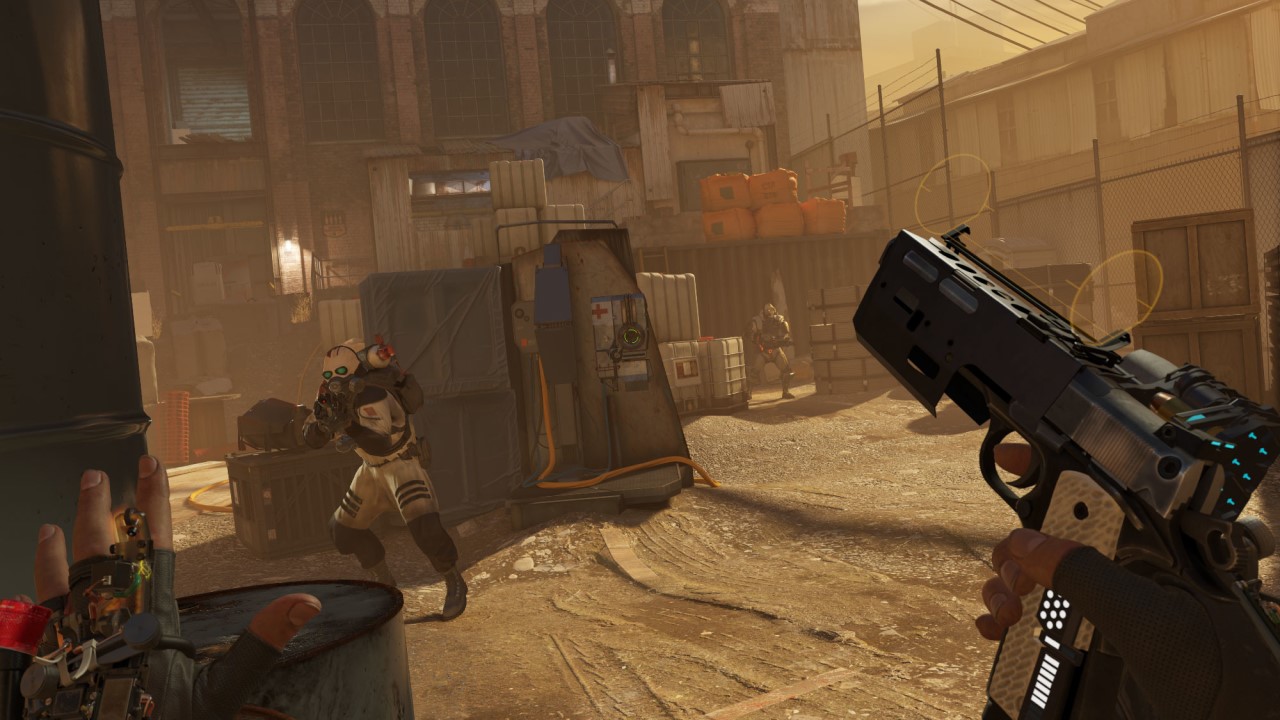
One of the best Half-Life games ever made, period
That all says nothing about the quality of Half-Life: Alyx as the first true Half-Life game in over a decade. While it may not be the much desired Half-Life 3, it still has large shoes to fill. The long wait didn’t make fans any less exacting with their expectations, so anything less than Valve’s best would be met with disappointment.
Without a doubt, Half-Life: Alyx is among the greatest of the Half-Life games, if not one of the top three. Don’t let it being a VR-only title dissuade you: the game isn’t just a master class in VR design by merit alone. After Half-Life: Alyx it’s hard for me to imagine this franchise continuing outside of virtual reality. The formula wasn’t replaced or altered to work in VR – as a matter of fact, it feels like it was always meant to be played in this medium.
Half-Life: Alyx plays and feels like a Half-Life game in every conceivable way, from the linear levels, bespoke physics puzzles, and general horror vibes the franchise is known for. There are segments in Half-Life: Alyx that make Ravenholm feel light and sunny in comparison, including a tense chapter where I had to avoid a deadly enemy who was blind but had precision hearing (again, hi “Jeff”).
The set design, pacing, and shooting all scream, “this is Half-Life,” throughout the entire fifteen-plus hour campaign, so fans worried the move to VR would somehow tarnish the experience will be overjoyed to hear otherwise. Even the story, which appears to be a bit of a lore-filler early on, quickly escalates into one of the most impactful climaxes in the franchise, making Half-Life: Alyx essential viewing for whatever is to come after.

I won’t reveal spoilers here, but suffice to say the last three hours of the game moved along with such intensity I didn’t pull my headset off until the credits rolled, and the ending left me reeling for the rest of the night. Hell, I’m still digesting the conclusion, and after poking around Reddit a bit I’m certainly not alone. The first half spent with just Russell chirping in your ear is enjoyable, and Rhys Darby does an excellent job endowing this new character with the right amount of charm and aloofness, but it’s the second half that cements Half-Life: Alyx as one of the pinnacle games in the franchise.
Which, ironically enough, makes it a bit of a shame the game is only available in VR. Half=Life: Alyx belongs in VR, make no question of that, but not everyone is willing to fork out the money needed for both the headset and beefy computer needed to enjoy it. Prices have come down, and the requisite computer components are not near as prohibitively expensive as they once were, but Half-Life: Alyx is such a phenomenal, necessary entry in the series it’s a bit upsetting to know not every fan will be capable of experiencing it for themselves.
But, the game is of such a high watermark that it alone will drive VR sales, much like Breath of the Wild did for the Nintendo Switch. Half-Life: Alyx is the game that finally proves VR is more than just a gimmick, and that certain genres actually play better from within a headset. After Alyx and its light survival-horror elements I started to dream of a potential Resident Evil 8 exclusively made for VR. Half-Life: Alyx proved to me VR is a technology that can enhance certain games without compromising their soul, and I am excited to see what debuts in its wake.
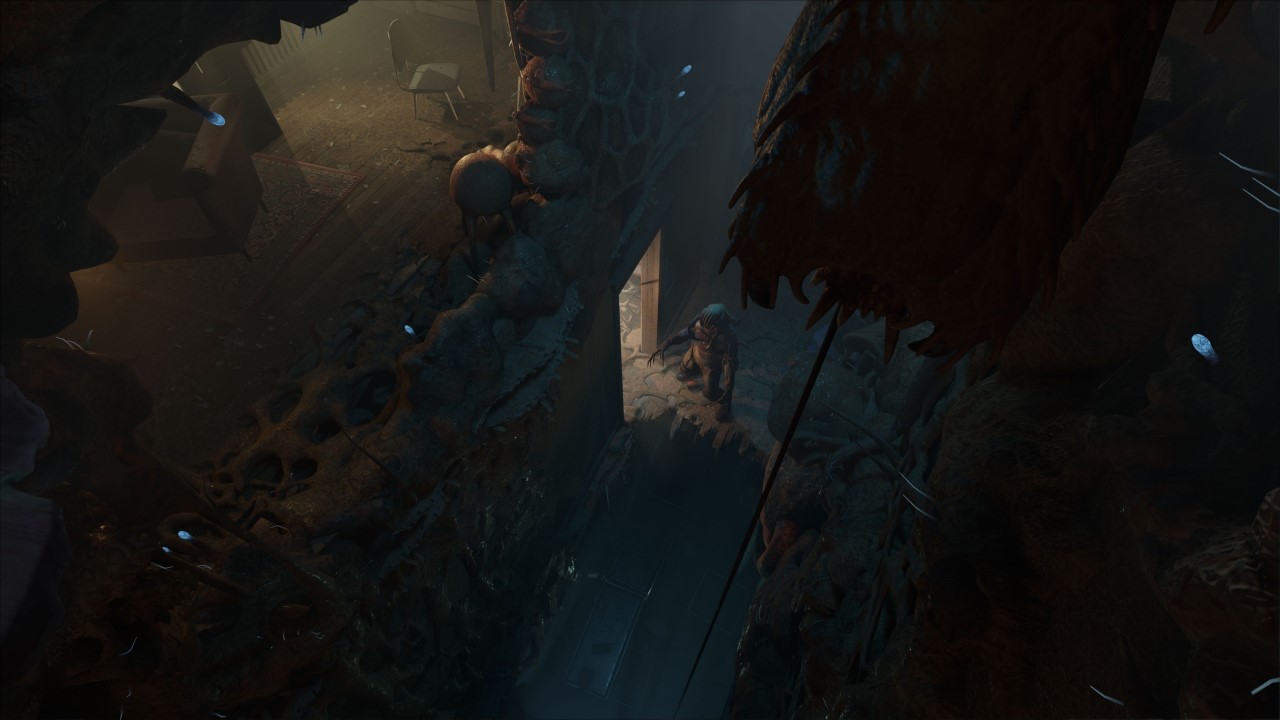
The Verdict
Half-Life: Alyx is VR’s crowning achievement – the game that rises above all expectations and solidifies the medium. In paying special attention to what makes VR special and in keeping true to the heart of Half-Life, Valve has crafted not only the greatest title available for virtual reality, but one of their best games ever. Half-Life: Alyx will be bandied about in Game of the Year conversations, I promise you that, and it rightly deserves to be.
After such a long hiatus Half-Life is back, and it’s hard to imagine a future without new entries being in VR, so integral does it now feel towards the series. Valve didn’t settle with making one of their core franchises work in virtual reality, but instead leaned into what made Half-Life special and demonstrated why the move to VR was the next natural step.
Half-Life: Alyx is the first VR game I’ve completed and started up a second playthrough of. I can’t get enough of it, and I can see it becoming one of my annual games, much like Half-Life 2. There is a sick pleasure found in avoiding barnacles with my actual body, and watching an antlion grub smashed into goo as I use its life-essence to heal my wounds. So outstanding is Valve’s achievement that I still haven’t had my fill, even after fifteen hours of play.
All future VR games will look to Half-Life: Alyx as the gold standard hereon, and thanks to its absolute excellence in design and presentation we are all the better for it. Virtual reality will never be the same, nor will Half-Life after Alyx’s jaw-dropping conclusion. Half-Life: Alyx proves once and for all that Valve never lost their spark, and if it’s any indication of what’s to come then the future looks brighter than ever.
Hopefully we don’t have to wait more than a decade for the next installment this time around.











Published: Mar 25, 2020 02:17 pm